It’s been a couple weeks since GoPro announced clearer details of their developer program, and in conjunction with that – when Polar concurrently announced (on GoPro’s stage) their integration of the Polar V800 with certain GoPro products.
I’ve spent the last couple weeks wrangling some answers from both sides of the equation, and now have a bit clearer picture of what the future holds. It’s actually really interesting, and even more interesting for 3rd parties beyond just GoPro and Polar.
GoPro’s new Developer Program:
Geekiness Alert: If you’re a geek, you’ll enjoy this section, if not, skip ahead to the next section.
GoPro has always had a bit of a developer interface. That interface would allow various companies to integrate directly with GoPro products. The challenge was, said interface roughly fell into three buckets:
A) Unsupported control via WiFi (many companies used this, resulted in low-quality imagery)
B) Super-secret club control via WiFi (some, like Periscope used this)
C) Physical control interface via HEROBus (such as for mounts and cases)
As you can see, sections A & B never actually were that ‘open’. It was more of an official and unofficial backdoor, but hardly something that had a landing page – let alone was oft used beyond a few special folks.
Over the past year though we started hearing more companies that claimed they were part of a new developer program. Said program was ‘exclusive’ and offered direct access to the GoPro camera for control (via various means). For example, consumer drone maker 3DR noted this (and actually implemented it), as did another drone maker AirDog (but hasn’t implemented it yet). But that still didn’t solve the problem for the masses.
Enter GoPro’s newest program, the creatively named “Developer Program”. This program sits aside two other officially named programs:
Mechanical Toolkit: This covers things like mounts and cases, basically physical interconnects
Camera Toolkit: This covers connectivity via WiFi connectivity for apps (usually on iOS/Android)
Developer Program: This has three components, covering Bluetooth Smart connectivity, HEROBus connectivity (that’s the connector on the back of the GoPro), and then metadata insertion into the video stream.
It’s this last option that now allows 3rd party entities to now control certain camera functions via Bluetooth Smart (which certain GoPro cameras have), as well as pass data to the GoPro camera to be saved alongside the video. So in effect the GoPro becomes more than just a vessel for video, but also a data recorder too.
When a 3rd party uses a feature (officially called ‘BLE Metadata Insertion’), the GoPro camera will receive the data via BLE (Bluetooth Smart) and then write it as a secondary track within the video file. This allows a 3rd party to tell the camera to record all sorts of data such as speed, distance, or even Taco Bells passed on a road-trip. Totally up to the 3rd party app. GoPro is merely a carrier pigeon for data at that point.
Once the data is recorded into the video file though, it’ll be up to the 3rd party apps to figure out how to deal with it. This means that GoPro themselves won’t read this data, nor will it even know/acknowledge it exists. Instead, you’ll defer to the other companies app (i.e. Polar) to do any video editing that takes advantage of that data. Of course, regular video editing can still be done with the native GoPro apps.
Why it matters to Polar:
For Polar, this is probably the best news it’s had in a long while in terms of gaining consumer popularity outside of endurance athletes. It gets all the benefits of an action cam, without all the headaches and cost overhead of being in that market. While action cams may have been a desirable market years ago, these days a glut of low-cost cams have put significant pricing and product pressure on many companies in the market. This way, Polar receives the end resultant of their data integration story without having to do all the work.
In the case of Polar, they’ll be using the Developer Program (and not any mechnical piece). In talking with Polar, they’ll be focused on the Hero 4 Black/Silver for now. It remains a bit fuzzy whether or not access to the Hero4 Session is even a possibility (and GoPro has been somewhat evasive on that question in my communications).
Polar’s announced integration starts with the V800, their flagship triathlon watch announced in January 2014. That watch has seen substantial software upgrades over the last few years, albeit at times somewhat slowly. This integration will effectively treat the GoPro like a data storage location. Sorta like a USB thumb drive.
So the flow of data going to the GoPro camera from the V800 includes base watch metrics like speed and distance (via GPS), but also Bluetooth Smart sensor data including heart rate (from a Bluetooth Smart HR strap). In asking Polar what other sensor data they planned to add (such as cadence or power), they noted that they’ll be starting with HR and then evaluating from there. You can see the HR data as shown on Polar’s demo video, also in the screenshot below:
Now while Polar doesn’t have to build out their own camera hardware – they will actually have to build out their own video software. That’s because the GoPro apps aren’t currently planned to be able to understand/interpret the data that Polar sends to the GoPro camera to be written alongside the video files. For that, Polar has to write their own apps.
So in effect, Polar just got into the video editing app business. This means that in order to be competitive, they’ll need to develop apps for iOS, Android, Windows, and Mac. The reason they’d need to also do desktop apps is that it’s impossible to edit higher quality GoPro (2.7K/4K) footage on all but the absolute newest of smartphones. This is not a position I’d envy.
In talking with Polar, they note that as far as platforms go they’re planning on having apps available for mobile devices, but haven’t specified which exact platforms (i.e. will they support iOS, Android, and then whether or not they’d release at the same time).
No doubt this integration is super cool for Polar users. Sure folks could use 3rd party apps like Dashware today to accomplish much of this, but the planned idea of simplicity for GoPro users on the Polar platform could be big. It could also then ripple into getting more photo/video content Polar Flow – in the same way that Suunto allows today on their Movescount platform (or like how Strava has photos in their own platform). This sort of visual content tends to draw people into a platform far more than just data stats, especially once you get beyond hardcore endurance athletes. It also helps these companies from a marketing standpoint once they see a Polar (or Garmin or whomever) logo sitting along the bottom next to the data.
Why it really matters to everyone else:
Now while I often talk about sports companies here (such as Polar), in reality this move is far larger than just Polar. Within GoPro’s developer conference, there were numerous other partnership announcements among the 30 attendee companies:
BMW M Laptimer: This extends BMW’s pre-existing GoPro integration, but adds in data metrics similar to what Garmin VIRB XE would use with an OBD-II data connector. Pulling in details such as throttle input, speed, braking and g-forces. The advantage here over an add-on solution like Garmin is simply cleaner integration straight into the car dashboard.
Timecode systems: For those doing more professional video production, one company has created a backpack system that matches up the timecodes. Super-useful in multi-camera setups (i.e. what you might have seen in Mythbusters).
Then there were companies that didn’t get announced, but are in the program. Wahoo Fitness for example, has confirmed they are in the Developer Program, with the aim of adding Wahoo ELEMNT integration with GoPro later this year.
But some of what wasn’t shown or said is potentially more interesting. For example, consider the following:
Velon: This is the umbrella group that sits over the vast majority of the pro cycling World Tour teams. Last year they partnered with GoPro to bring a bunch of Tour de France footage (among others), and that’s continued this year. Barely noticed in an article a few months back was a casual mention that they planned to add data metrics to their videos for the 2016 Tour. As such, the only way that’s going to happen is through some additional layer of sensor data capture. My guess is some small hardware layer to capture ANT+ data and re-transmit it to the GoPro’s.
4iiii: The company has quietly added functionality to their Viiiiva HR strap over the years, such as bridging and more recently gym equipment integration. In theory, there’s actually nothing stopping them from doing the same bridging with GoPro. They could in fact bridge ANT+ data via Viiiiva, and then straight into a GoPro camera. Effectively giving new life to a product as a ANT+ bridge. Of course, there are numerous other dual capable products in the market that could take this direction, such as Wahoo with their straps. But with 4iiii’s existing ANT+ to BLE functionality in place, it makes it a more natural fit.
Smartphone Apps: Excluding connecting to sensors like car engines or cycling, there’s actually a much larger audience for basics like speed and distance on videos. This could apply to skiing, windsurfing, driving, and many more. In this case, some creative developer could actually create an app on the phone that simply connects to the GoPro and adds metadata to the video stream (i.e. speed, position, etc…). For many people, having a cell phone on them is hardly a challenge (even in a waterproof case). This effectively makes the GoPro like a GPS enabled Garmin VIRB, TomTom Bandit or any number of Sony action cams.
GoPro’s challenge here though is that while the ability to use the data platform is cool, the inability to have existing GoPro apps utilize that data platform is a huge hurdle for developers. Creating a good video editing program for an action cam is the difference between an action cam company succeeding or not. In fact, GoPro’s own CEO has said numerous times in recent investor calls that their own existing app set is too hard to use for casual users. That’s been paired with a small flotilla of video app/company acquisitions by GoPro, as well as their brand new desktop editing app that’s much simpler to use.
So one has to wonder then – if the goal is to simplify the GoPro experience, why force 3rd party developers (and thus us end consumers), into more complicated scenarios? Nobody really wants to use multiple apps to edit video. And no non-video company really wants to create video editing suites on four platforms (iOS/Android/Windows/Mac). It’s a huge resource drain.
Which begs the question of when we’ll simply see GoPro’s own native apps be able to consume and display that metadata content directly within their own apps. Given that GoPro controls how that data is captured, and the data recording structures – it’s not a big leap to then display that data on videos within their apps. As in this equation, there’s nobody better positioned than GoPro themselves to make that happen.
We’ve seen that with Garmin’s VIRB Edit. Despite the Garmin VIRB camera itself being kinda clunky looking, the VIRB Edit suite (mostly on the desktop) is incredibly powerful when it comes to customization of data captured by the VIRB cameras and other Garmin products. It rarely gets enough credit for how much you can actually do behind the scenes with it. One of the key features in the VIRB Edit desktop app is the ability for consumers to create & exchange gauges and templates for data overlays.
By taking a similar tack, GoPro could empower their vast empire of millions of loyal followers to create and trade all sorts of templates, app-store style. YouTube already clearly shows how much people love their GoPro’s and the extent they go into customizing the experience around them. GoPro’s existing desktop app already supports templates, so the base framework is there.
No matter how it unfolds though, I’m definitely looking forward to having the gates finally opened up on legit GoPro integration. I think by time we hit summer, and certainly into the fall we’ll start to see some pretty cool solutions.
—
Preemptive footnote: Yes, I saw that GoPro’s upcoming Karma drone was delayed till fall (for the holiday season). While missing the summer season is a massive sales and marketing hit, I’d think that’ll probably better align their ability to sim-launch with the planned Hero5 may help. Both were noted in last week’s investor call.
FOUND THIS POST USEFUL? SUPPORT THE SITE!
Hopefully, you found this post useful. The website is really a labor of love, so please consider becoming a DC RAINMAKER Supporter. This gets you an ad-free experience, and access to our (mostly) bi-monthly behind-the-scenes video series of “Shed Talkin’”.
Support DCRainMaker - Shop on Amazon
Otherwise, perhaps consider using the below link if shopping on Amazon. As an Amazon Associate, I earn from qualifying purchases. It doesn’t cost you anything extra, but your purchases help support this website a lot. It could simply be buying toilet paper, or this pizza oven we use and love.

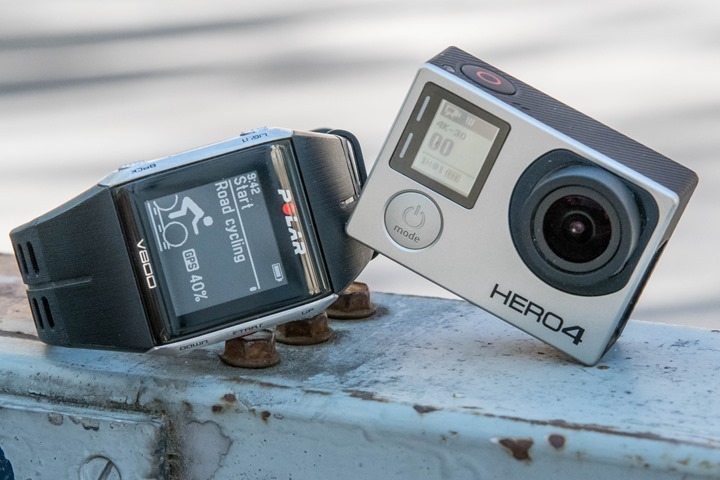
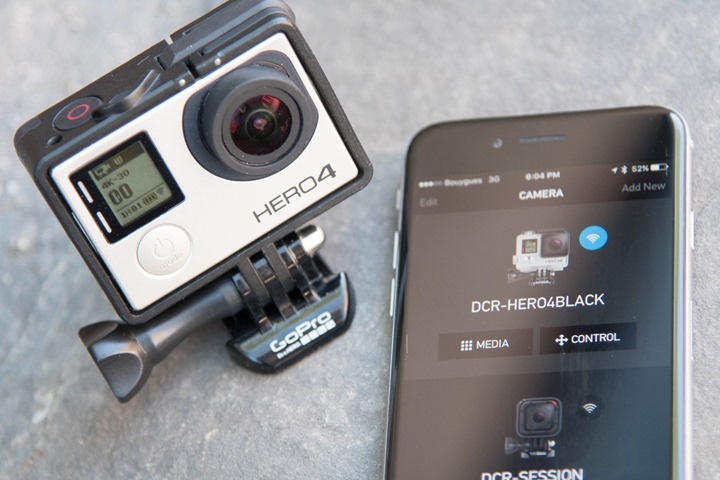
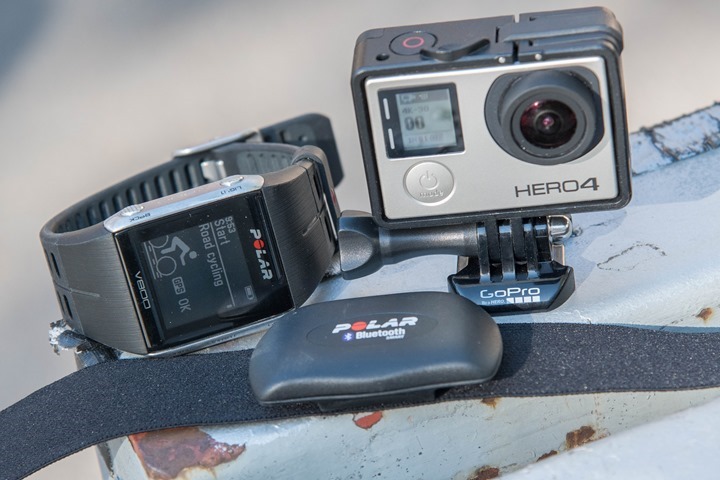
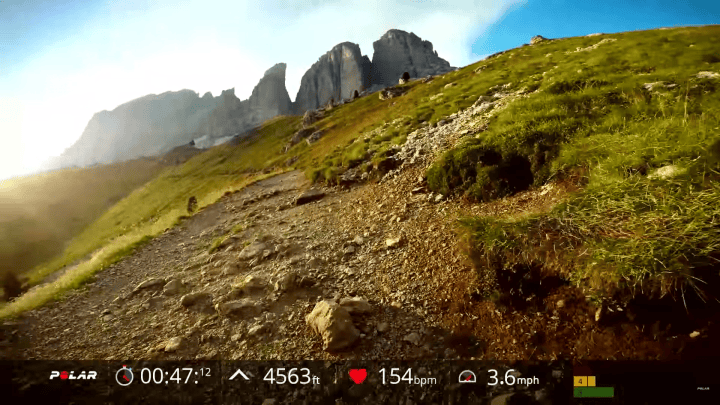
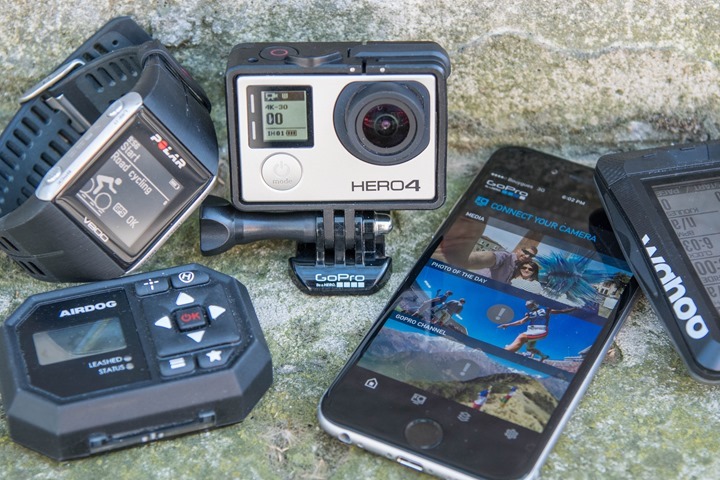



















Hi,
Are there any plans for a BLE API to control the camera (even basic things, like start/stop video recording and taking a picture)? Or it’ll only be available for companies?
My use case was to remote control a Hero 4 Silver with a Garmin Forerunner 230 (from a ConnectIQ app).
Any info if this is planned? With the API I could do the app myself.
[]’s
Walter
It’s funny you mention the CIQ app route. I was actually thinking the same thing (as a concept). In theory, it’d be quite doable with a middle-man app (on your phone to send the commands). That’s because CIQ doesn’t permit to my knowledge the ability to pair any BLE sensors directly from the watch, only to a 3rd party phone app.
Right now, based on my understanding – the BLE side of things requires the $999/year membership, versus the more reasonable $99/year membership: link to developer.gopro.com
Which, given recent press for GoPro, would seem like they’d want to increase people developing solutions on the platform (to increase stickiness). I mean, it kinda worked for everyone else… (Pebble, Connect IQ, Apple, Google).
Sucks to hear that the Session seems to be floundering. I fear it may die.
That’s sad to me. I thought it was their next best hope of remaining relevant against the onslaught of cheap competition that China is cranking out (starting to see more and more threads in various places about how “good the knockoffs are for the money now” and such). Why did I see it as having that hope? Because it’s much more simple to operate than the Hero and MUCH more flexible in it’s mounting capabilities and size. In short, it’s just better for average-man to use for 99.9% of what average-man wants out of an action cam.
But what happened? GoPro has flawed marketing. To the world, a “GoPro” is the Hero. End of story. They’ve marketed themselves that way so long that it won’t be fixed without major marketing effort. Without that, nobody knows or cares to understand what the Session is and why it’s probably better for them. Harp on the lack of a swappable battery all you want, but for average-man the battery life on a Session is GREAT. Way more than “enough” for what most people do. Yes, for more serious use they did miss the boat by not giving it external power capability, but otherwise the thing is awesome.
A Session that could have the data stream stuff added would really be killer. And I agree, Ray, that the missing part of this all is a killer GoPro editing suite with plug-ins that could be third-party created for gauges and data management (and even rudimentary timecoding!). But I worry their window is closing due to ultra-cheap competition. The erosion is significant already.
–Donnie
Totally agree on the Session being purely a victim of failed marketing and expectation setting. It’s a great little camera, but their introductory price point at $400 was a deal killer when the Silver was the same price with so much more capabilities and quality. That quality difference is what killed them in the mainstream and tech press last summer (given the same price point).
Had they introduced it at the now $199 price point, they’d have had a massive success on their hands. And all the Wall Street and mainstream media hand wrangling would never have occurred. But alas, it was too late for that. As I try and constantly remind smaller companies: You only get one chance to launch a product correctly. Just one day, that’s it. And the Session proved that no matter how big you are, that rule still applies.
A shame, because anytime I go near water/beach…I’m likely to use a Session.
I would think that the session, or it’s successor, would remain a staple of Go-Pro going forward, whatever their missteps. Both as part of any 360 degree/VR photo solutions as well as drone photography, the session, or, again, a slightly more capable successor would fit the bill better than the black/silver line.
Curiously how difficult is it to upload activities on a v800 to training peaks as compared to Garmin?
There’s no auto-sync from Polar to Training Peaks, so you have to do it manually.
Sad, for me and all my buddies that’s the main feature we want in a watch or device. To me noAutoUpload Is like not having AC in a car now.
The Autolib cars we use in Paris don’t have A/C. I’ve found if you drive fast enough with the windows down it kinda works. Kinda.
Hi josh.
Actually you can automatic sync to Strava and then auto sync to TP by using syncmytracks, Tapiriik etc. personally I like to use Rungap on my iPhone. It’s import from flow or Strava in one click and export to 10 sites or more in one click including TP, Runkeeper, Endomondo, Garmin Connect, health, Dropbox and many many more.
And the even better part is, that you can edit activity name and note before sharing, so you don’t have to do it in every website.
So no more boring lunch run, afternoon ride etc. :-).
Id love for Suunto to have this feature too but i feel like they will be the last company to do so. They are too busy re-releasing the same watch but with different software firmware’s.
All will be trying hard to catch up to the Fly6 and Fly12! Cycliq has done it very well right out of the gate!
As much as I want to like the Fly6, setting the date and time on the device could possibly be the kludge-iest thing in tech this decade.
If Garmin could ever get their collective act together long enough to marry up one of their ANT+ cameras with their ANT+ radar units to automate recording of cars approaching from behind, I’d ditch my GoPro and Fly6 cameras and standardize everything on Garmin.
Fwiw, in the Fly12, the phonet sets it automatgically.
That would make a great update for a future version of the Fly6, in case anyone at Cycliq reads these posts. :-)
We do John!
Andrew Hagen, Cycliq, CEO
Considering how great the software is from GoPro it is a little disappointing that they did not just go the ‘plugin’ route for the various add on data that might be captured.
Polar and software? Hmm… As a long term owner of several Polar products, most recently the V650, I don’t have much confidence in them delivering all the promised functionality on time, or possibly ever. Polar still haven’t implemented some of the previously promised basics for the V650 such as wireless syncing and training plans. Also, while Flow looks pretty, it doesn’t have all the functions of the ancient PPT5. I’m reluctantly coming to the conclusion that I should migrate to Garmin, even though I’ve found their hardware to be a bit flaky in the past (Edge 510). Heaven = Polar hardware/ Garmin software.
Hell = Polar software/ Garmin hardware. Thoughts?
My thought exactly. Although I am using the V800, and have not been using them for a whole year yet.
I actually still use my garmin (edge 500) as more of a easy to read head unit, but I find that I prefer the watch during a race so I am not as fixated on my numbers, since I find that I am looking at it less I get to concentrate on what I should actually be doing.
I definitely hear you on that. I have a V650 sitting on my desk at home doing basically nothing now, I use an Edge520. Yet I have a V800 on my wrist. I actually like this combo as I mainly have BLE/Ant+ dual sensors, and I get redundancy in data recording.
I am starting to feel the siren call of a Garmin tri-sport watch, though, as that would streamline things a bit.
Same here – after waiting way to long to get my data from the PowerPro software to the (new, shiny, but less functional) Flow, and after Polar essentially bricked my (pretty expensive and still functioning perfectly) RS800 watch, because they decided not to support the iR connection anymore, I switched to Garmin.
I could not agree more. When Ray quoted that Polar would need to write the video editing software across iOS, Android, PC and Mac I laughed out loud. They struggle with simple firmware updates to their watches. Perhaps they will partner with an existing software vendor to make this happen. However this will divert them even further away from continuing to develop their sports watch updates.
As a hardware company they are very good, and I do love my V800 … however the slow updates of promised functionality does question the purchase sometimes.
To be fair Bertram, it’s Microsoft that dropped the IrDa stack, nothing that Polar could do about it. It’s been added back to the developer edition early this year and it might be released with the Redstone update of Windows in June. Nothing for sure since this is second hand information.
@Sven you’re half-right as Polar told users they won’t update drivers for W10, period. There were no other explanations and the watch was still advertised as one of the top models a few months ago. They could at least have offered a special upgrade to V800 price.
@Bertram you may try W10 latest update, see support.microsoft.com/en-us/kb/3150989
I wonder if GoPro really want leading video editing products to support the GoPro data track (like Adobe Premier or Apple Final Cut Pro…) but they haven’t been able to convince them yet.
Bad idea. $400 to buy a Hero 4/Silver but then add an additional $240/YEAR (paid to another company, so GoPro doesn’t even get any additional revenue).
To be fair, they attract different audiences – but both are critical.
A) Mass market consumers: Want to edit on their mobile devices (tablets/phones), but also occasionally edit on a desktop for longer trips/vacations where they need to offload content.
B) Video geeks: Want to edit in FCP/Premier. These are the people that typically make the videos that show off GoPro action the most.
For example, I fall within both camps. There are some videos I just slap together using native apps. But for anything more complex I’m going to use Premier or FCP (I use both). But unfortunately right now I can’t get data overlays easily into Premier/FCP without going through hell and back. So I don’t, and thus, my cooler videos could have had overlays as the data was there, but my desire to try and make that work was not.
I’m not sure this is really about technology. The tech of adding a text track to video is pretty straight forward. Take a look at a closed caption file, it’s basically just a time entry followed by the text. It can be updated almost every frame, so a well formatted .srt file could almost pull this off, at least in .m4v/mpg containers. Most decent video editing sdks include image and text overlay capabilities. I think it’s more about branding, if Polar provides the data, they want their logo on the screen. By the way, Polar would not need to create a fancy editing suite, just a UI for positioning the data fields on (even a static) video image and then just create an output mpg with the data on it – you then edit it in whatever you want.
The challenge though is the timing of data to screen and then pulling that into editing. Meaning, if you look at at data metric like acceleration or power, both of which are super-important to align to a specific second. Otherwise it’s obvious the data is off.
When it comes to video editing, and your slicing up segments and tweaking the start/end points of a clip, you don’t want to have to re-do a text file every time.
Was there any indication from Polar on the timing to deliver the functionality?
(keeping in mind all previous comments about likelihood of slippage in these dates!)
Announced timing does not matter with Polar, believe me. They “are sorry they were not able to” deliver functionalities announced 2 years ago. So, basically, when you can see it, you’ll know it’s there. Otherwise, as they keep saying “hang tight, it’s just around the corner” :D LOL
Officially from the press release the timing is: “Current users can update their Polar V800 with the latest GoPro integration via a Polar Flow software update coming later this year.”
Is there any word on other polar products being supported in the distant future? Eg M400?
I asked for other products, and they said they’d only confirm the V800 for now.
Geez, as big a fan of GoPro as I have always been (went through 5 of them), they seem to have lost their way and now will forever be chasing DJI and other Chinese manufacturers. It’s sad to see, but I think they won’t get back to the domination of the industry they once had with action cameras, and now with drones they are hopelessly outpaced as well.
I’m not so sure about that. We have yet to see a really simple consumer drone, something like the Air Dog, but with some better simple (non-follow me) automations and auto avoidance at a more consumer friendly (sub $1000) price. If Go Pro can get something like that with a gimbaled camera included by the end of the year, they could definitely clean up. Their marketing dwarfs the other players.
Do you expect that Garmin will jump on this boat any time soon?
They already have their own boat: The VIRB X/XE, which has been doing this for years (with the previous VIRB).
And a little known fact is that they actually have an API for the VIRB cameras, it’s just that almost nobody uses it (only Oakley I believe).
Ray,
As the V800 has been out so long, when do you expect a successor coming up?
It’s really hard to say. We don’t have any clear trends from Polar yet on release cycles in terms of product lines. I’d have said if you were going to release a new triathlon product, you would do so this time of year. Or take the Garmin cue and do so at/around the holidays in Oct-Nov.
The ContourGPS did this- embedding GPS data in the video file. I liked the videos that came out, because it showed where I was at the moment of the video clip, but it was very limiting because I had to use their video workflow and host it on their website.
GoPro did buy Dashware (http://www.dashware.net) and I would imagine they are working to have a cleaner version launch with the Karam (drone)
Hey Ray, what is the “case” you have the GoPro mounted in? It looks like a modified Frame with a sort of integrated quick release.
Thanks!
Yup, just the frame case. They’ve had a couple different versions over the years, and I believe this is now the most current one.
Thanks Ray! I think I’ve spent more $$ on mounts than I have on the cameras :-)
What would make this amazing is if the video and Polar data could then be fed back into a smart treadmill such that the treadmill would replay the run (tracking speed and slope as you run and watch the video). I would buy the V800, GoPro, and treadmill in an instant! Good bye boring winter treadmill runs!!!
Hey Ray,
Any idea if this is still happening? We’ve had a few new products from polar recently but everything seems to have gone quiet on the V800
Hi Ray
Any more news on this regarding third party manufacturers?
I’d love to be able to connect my Tickr X to my Hero 5 to record HR data. Currently the Hero sees the HRM but will not pair with it. I assume a firmware update would need to released by either GoPro or Wahoo (or both) to allow this.
Nothing. :(